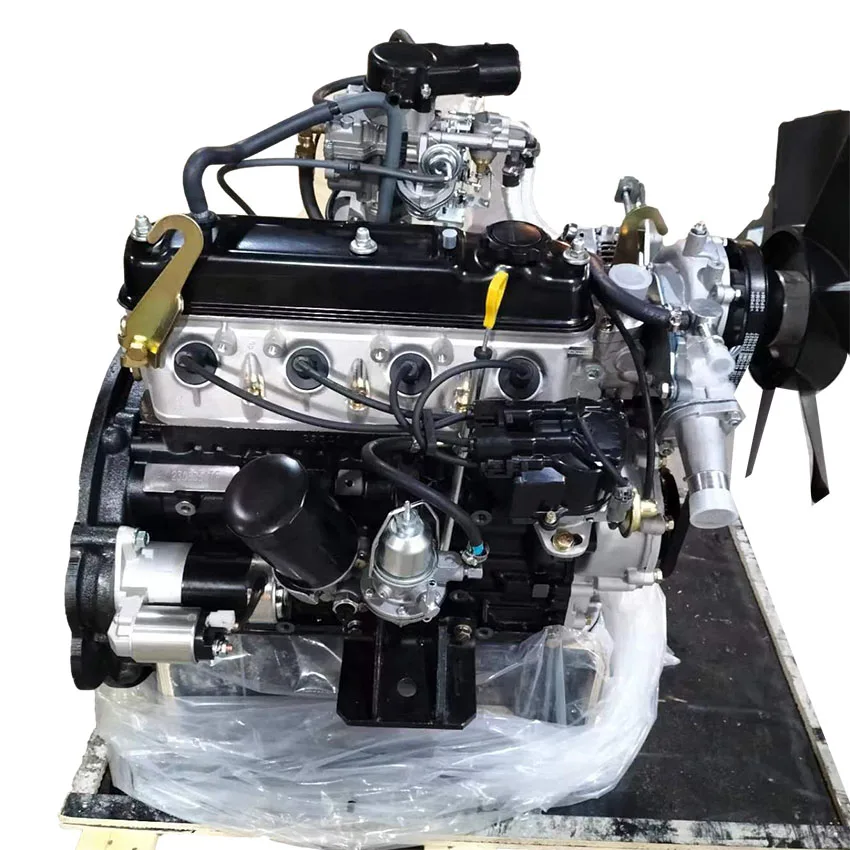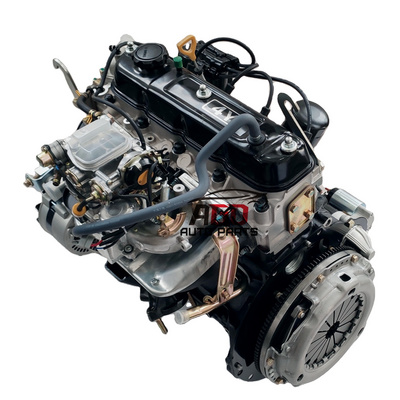The Best Upgrades for Improving the Efficiency of Your 4Y Engine
The Best Upgrades for Improving the Efficiency of Your 4Y Engine
Blog Article
Why the Engine Is the Best Choice for Efficiency and Efficiency in Your Automobile
The engine stays a crucial element in automobile layout, largely because of its substantial impact on both efficiency and effectiveness. As improvements in modern technology allow smaller engines to provide remarkable power while enhancing gas economic climate, the assimilation of features such as turbocharging and hybrid systems comes to be increasingly crucial. These technologies not only improve driving experience yet also address environmental worries. The inquiry arises: exactly how do these components integrate to redefine our understanding of automotive performance? Discovering this equilibrium discloses deeper insights into the future of engine layout.
Understanding Engine Types
Understanding the various sorts of engines is important for enhancing efficiency and performance in auto layout. The main engine kinds consist of interior combustion engines (ICE), electrical engines, and crossbreed systems, each offering unique advantages and restrictions.
Interior burning engines, which can be additional categorized into gasoline and diesel variants, depend on the combustion of fuel to create power. Gasoline engines normally give greater RPMs and far better velocity, while diesel motor are known for their torque and gas effectiveness, making them excellent for sturdy applications.
Electric engines, on the various other hand, use electric motors powered by batteries or fuel cells. They provide instant torque delivery, resulting in smooth velocity and reduced discharges. The effectiveness of electric engines is significantly more than that of ICEs, making them a prominent choice for eco-conscious customers.
Crossbreed systems integrate both internal combustion and electrical engines, leveraging the staminas of both technologies. They maximize fuel intake by utilizing electric power at reduced rates and changing to fuel or diesel for greater rates or much heavier lots.
Selecting the right engine kind is vital for achieving wanted efficiency metrics and environmental sustainability in modern-day auto design.
The Effect of Engine Dimension
Engine dimension often plays a crucial function in determining an automobile's efficiency and performance. Usually determined in liters or cubic centimeters, engine size directly influences the power result and torque characteristics of a lorry. Larger engines normally produce more horsepower, making it possible for better acceleration and higher leading rates. This is particularly beneficial in applications needing durable efficiency, such as sporting activities vehicles and durable vehicles.
However, increased engine dimension commonly associates with decreased fuel effectiveness. Smaller engines can deliver sufficient performance for everyday driving while advertising far better effectiveness, making them a prominent option in mid-size and compact lorries.
In addition, improvements in engine design, such as turbocharging and straight gas injection, permit smaller sized engines to achieve power degrees similar to their larger equivalents. This pattern emphasizes the relevance of not only concentrating on engine size yet likewise thinking about general car layout and innovation (4y engine). Ultimately, the effect of engine size on efficiency and effectiveness highlights the need for consumers to assess their details driving preferences and demands when choosing a vehicle
Advanced Engine Technologies
Innovations in engine modern technologies have substantially improved the landscape of automobile performance and efficiency, building upon the fundamental concepts developed by engine dimension. Notably, improvements such as turbocharging and direct fuel shot have actually enabled smaller engines to provide power degrees formerly related to bigger counterparts. Turbochargers compress air going into the engine, permitting increased power result without a matching increase in engine dimension, while straight shot optimizes gas distribution, boosting burning performance.
Additionally, variable shutoff timing systems have actually become a crucial innovation, enabling engines to adjust valve operation based on driving problems. This flexibility boosts both efficiency throughout acceleration and fuel efficiency during travelling. Crossbreed and electrical engine modern technologies even more illustrate the shift in automotive layout, incorporating standard interior combustion engines with electric motors to optimize effectiveness while minimizing discharges.
In addition, innovations in materials science have actually caused lighter, a lot more resilient engine components, better improving performance and long life. The combination of sophisticated electronic devices and engine control systems also permits real-time changes, making sure optimal efficiency across numerous conditions. Jointly, these sophisticated engine technologies not just enhance lorry performance but likewise contribute to an extra sustainable auto future, demonstrating the continuous evolution of engine style.
Balancing Power and Effectiveness
Striking a balance between power and performance is vital in modern vehicle design as makers seek to satisfy increasingly rigid emissions guidelines while satisfying consumer need for performance (4y engine). The difficulty lies in enhancing engine characteristics to provide durable power output without compromising gas economic climate
To attain this balance, engineers use various methods, such as turbocharging, which enhances engine power by requiring in even more air, permitting a smaller engine variation that boosts fuel effectiveness. Variable shutoff timing innovations additionally play a significant function, making it possible for engines to readjust their performance qualities based upon driving problems, thereby enhancing both power and effectiveness.
In addition, developments in products and making techniques have caused lighter engine parts, which lower overall automobile weight and improve fuel effectiveness without endangering power. Crossbreed technologies have also emerged as a feasible option, integrating typical inner burning engines with electrical powertrains to give a boost in efficiency while maintaining lower exhausts.

Future Fads in Engine Style

In addition, the advancement of innovative materials, such as high-strength alloys and light-weight composites, is established to transform engine parts. These materials not only lower weight but additionally improve thermal effectiveness, thereby enhancing efficiency. Additionally, makers are discovering variable compression ratios, enabling engines to adjust to different driving conditions, boosting both power output and fuel economic situation.
Further, the increase of fabricated intelligence and artificial intelligence in engine design is allowing anticipating upkeep and real-time efficiency optimization. This technology can result in engines that self-adjust for optimal performance based upon driving patterns.

Final Thought
In conclusion, the engine serves as a crucial component in achieving optimum efficiency and effectiveness in contemporary cars. The interplay in between engine dimension and layout continues to develop, driving developments that balance electrifying efficiency with ecological sustainability.
Furthermore, developments in engine design, such as turbocharging and direct gas shot, enable smaller engines to achieve power degrees similar to their larger helpful hints equivalents.Advancements in engine innovations have significantly improved the landscape of automobile performance and performance, structure upon the foundational concepts developed by engine size. Turbochargers press air going into the engine, allowing for boosted power outcome without a corresponding rise in engine size, while straight injection maximizes gas delivery, boosting combustion performance.
Hybrid and electrical engine innovations further show the change in vehicle design, integrating conventional inner combustion engines with electrical motors to optimize efficiency while lowering discharges.
Jointly, these sophisticated engine modern technologies not only boost vehicle efficiency but additionally contribute to an extra sustainable automobile future, showing the ongoing advancement of engine design. (4y engine)
Report this page